I think of slate as an expensive building material but they use it all over the Galicia and the parts of Leon we were just in. And you see it by the side of the road. I guess it is not expensive here.
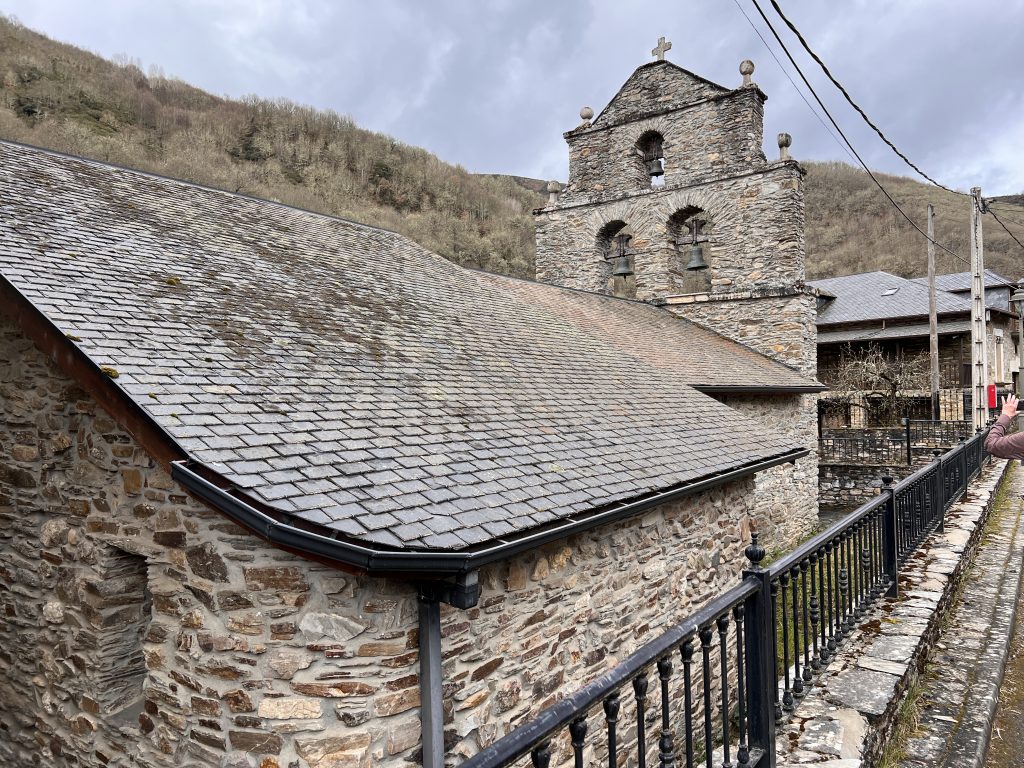
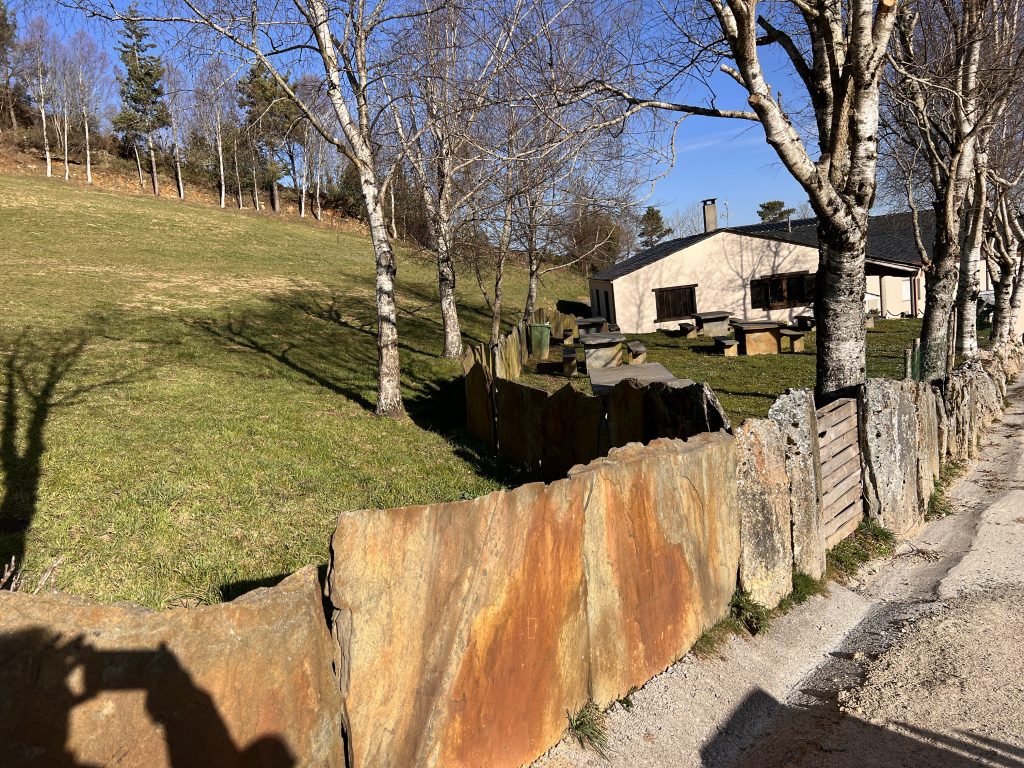
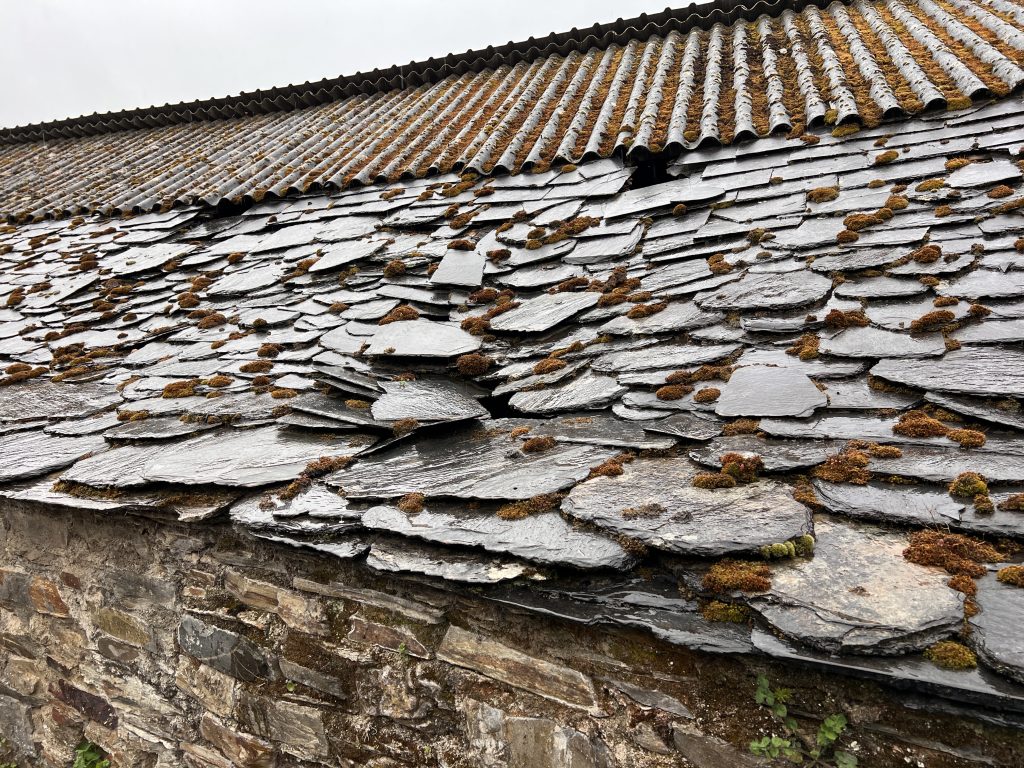
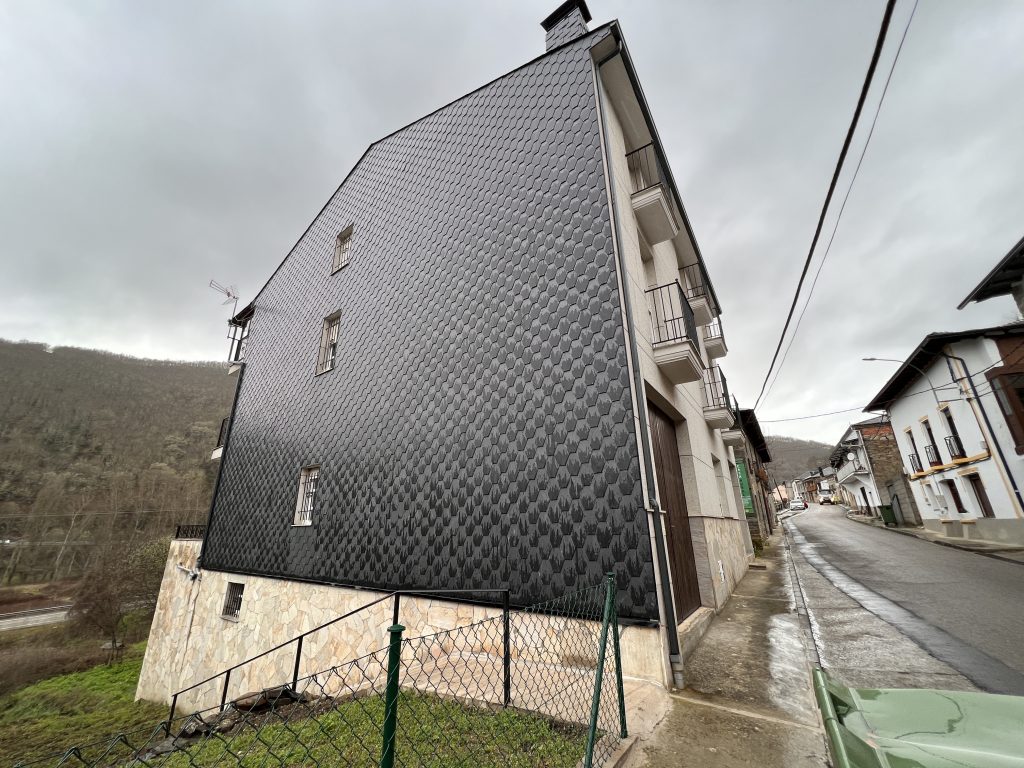
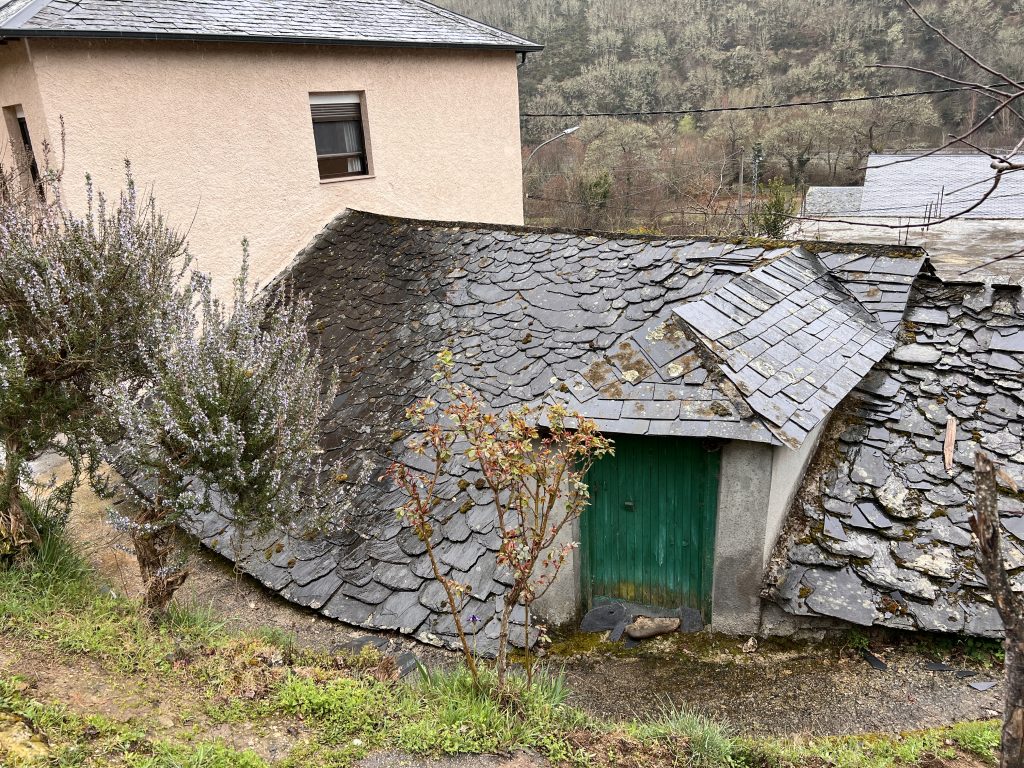
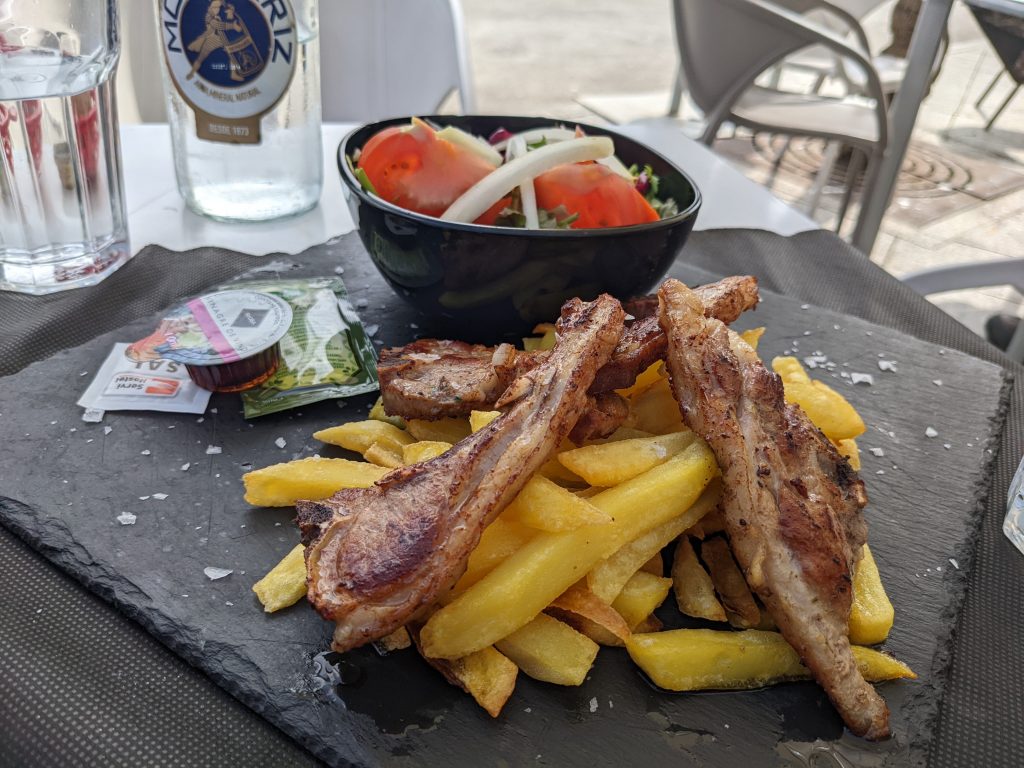
We're doing it again, from Sahagun to Santiago
I think of slate as an expensive building material but they use it all over the Galicia and the parts of Leon we were just in. And you see it by the side of the road. I guess it is not expensive here.






We have had many wonderful experiences on the Camino but if we think of social experiences two stand out. The first was on the Portuguese Camino. We stayed, without knowing its reputation, at Casa Fernanda. We got there in the afternoon and had a good time talking to the 15-20 pilgrims there in the back yard of the albergue. Fernanda was moving from group to group chatting, going off periodically to work on the dinner. We kept hearing that she was waiting for a ”family” to show up. When they did show up it was a group of young bicyclists some of whom might have been brothers. They were traveling with a van to carry their stuff. That evening we had a very good communal dinner, with lots of food and lots of wine which made everyone more friendly. Their ”stuff” included several guitars. They proceeded to sing traditional songs from their region, they had good voices. Then other Spanish songs. Then more songs where we all sang along, culminating with “Imagine” and ”Hallelujah” with people getting the lyrics from their phones. An evening to remember. We learned later that Fernanda is a legend on the Portuguese Camino and the communal dinner usually include group singing.
The second great experience was at Anabel and Bernadino’s place eight years ago. They make a famous communal dinner of vegetarian paella. There were 15-20 people there and the conversation was wonderful. We were sitting at a table speaking English but with people from four different countries: the US, Australia, Canada and England.
The force that created these experiences was two dynamic, friendly, outgoing, and enthusiastic hospitaliers: Fernanda and Anabel, and their husbands, who, while not quite as outgoing, were important to creating the experience. People like this create environments where people can have fun and enrich the lives of thousands of pilgrims. We realized this when we stayed with Anabel and Beradino and she showed us dozens of letters from people thanking her for the great time they had at her albergue. She also had a guest register with literally dozens of drawings people had made to express how appreciative they were. You could see the love. And clearly Anabel was touched by their responses. It is nice that she gets that back for all the effort she puts into the albegue.
Spain has a network of paradors which are fancy hotels run by the Spanish government. Portugal has a similar system. Originally they were historic buildings that were updated to be a luxury hotel. If you have seen the Camino movie The Way there is a scene where they stay in the parador in Leon. Recently they have expanded to just putting fancy hotels in tourists spots, the parador in Muxia is an example.
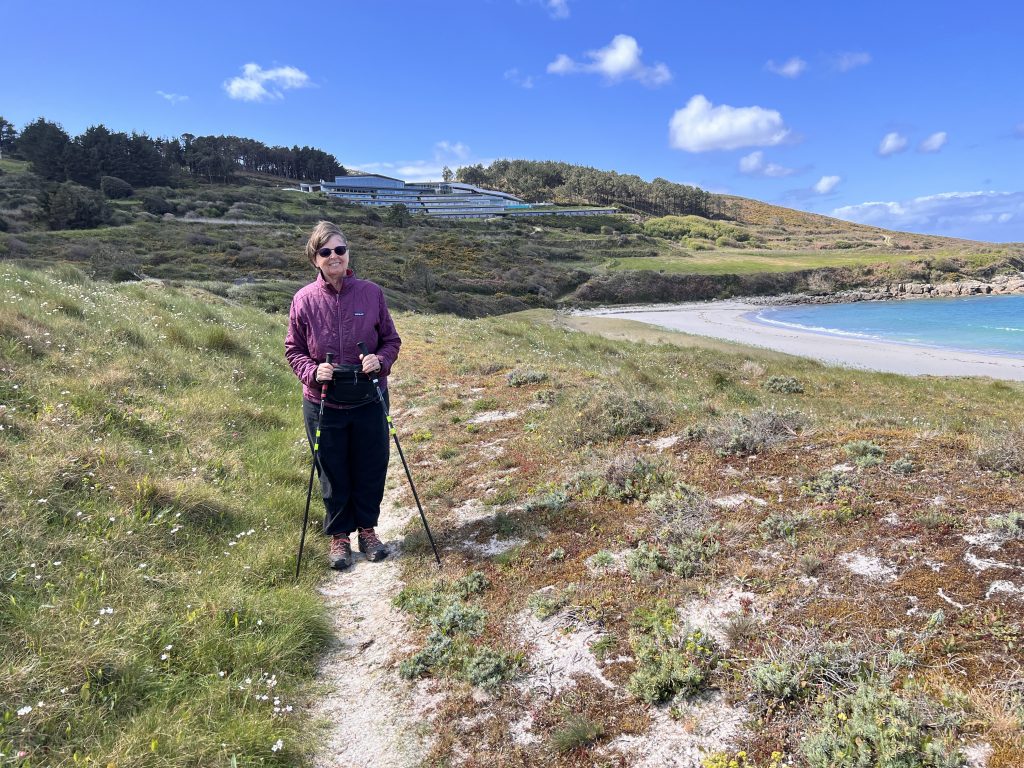
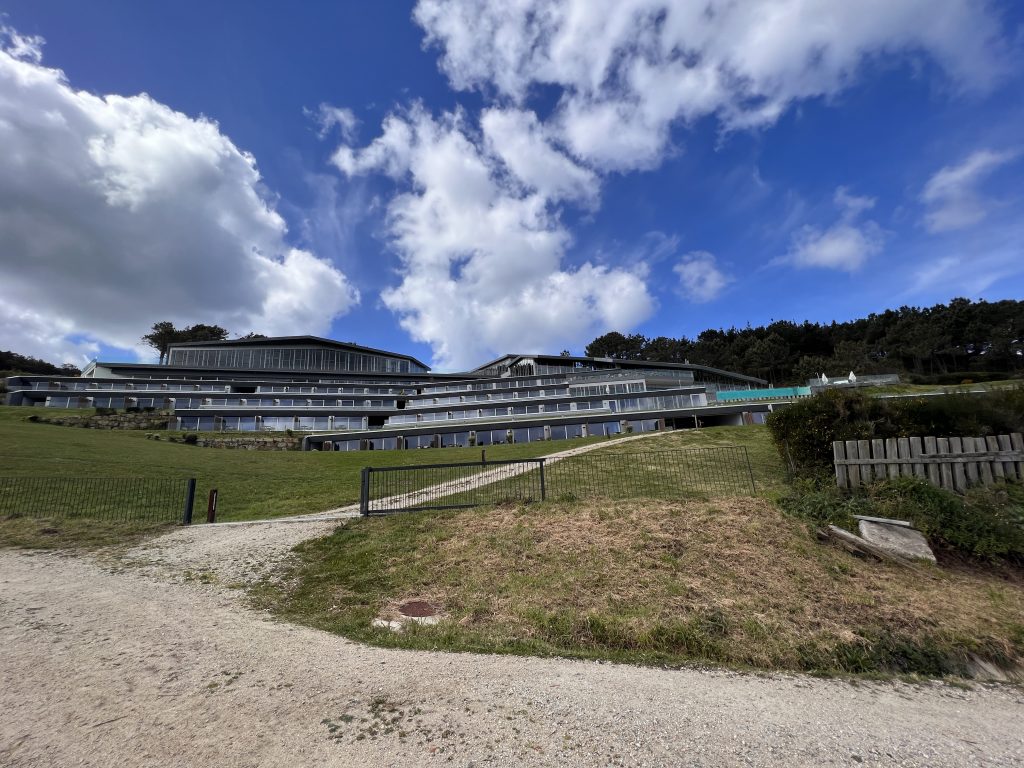
It is build on a hill and has six levels. We visited it today by walking up from the beach below. We entered and saw they had an ”elevator” which was really a funicular.
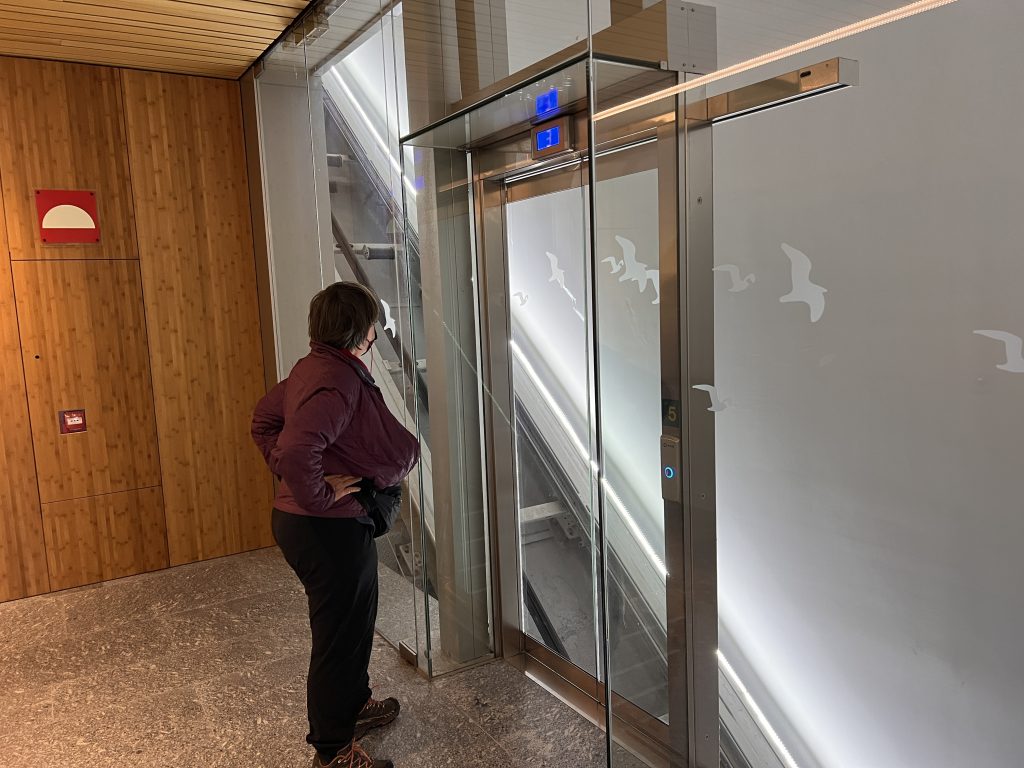
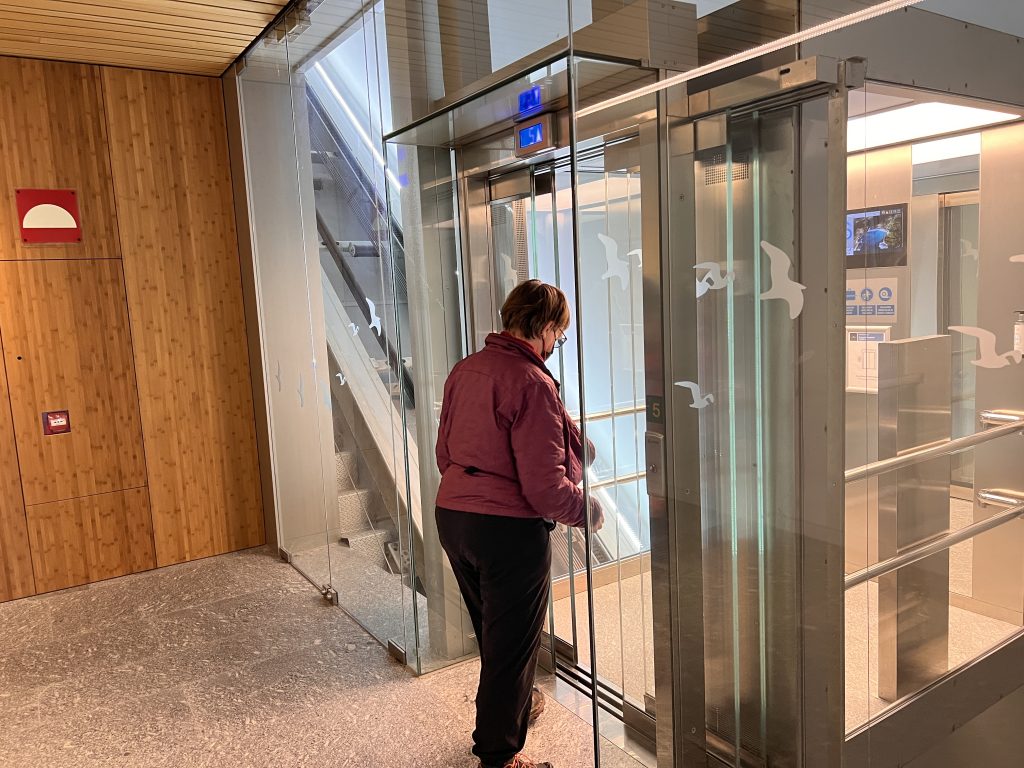
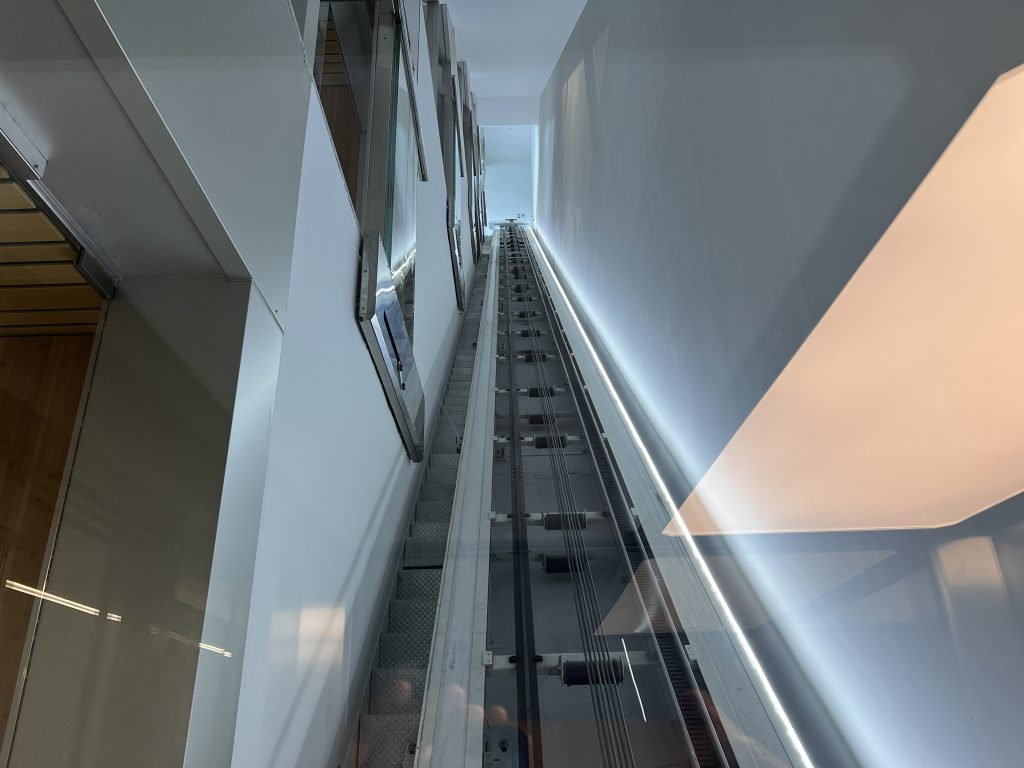
There actually is a second one above and parallel to this one. I guess it is a freight funicular.
The floor numbers were quite confusing until we figured out that the lowest level is 5 and the go up to 0 which is the top level with the main lobby of the hotel. All the rooms have a view of the beach and bay below.
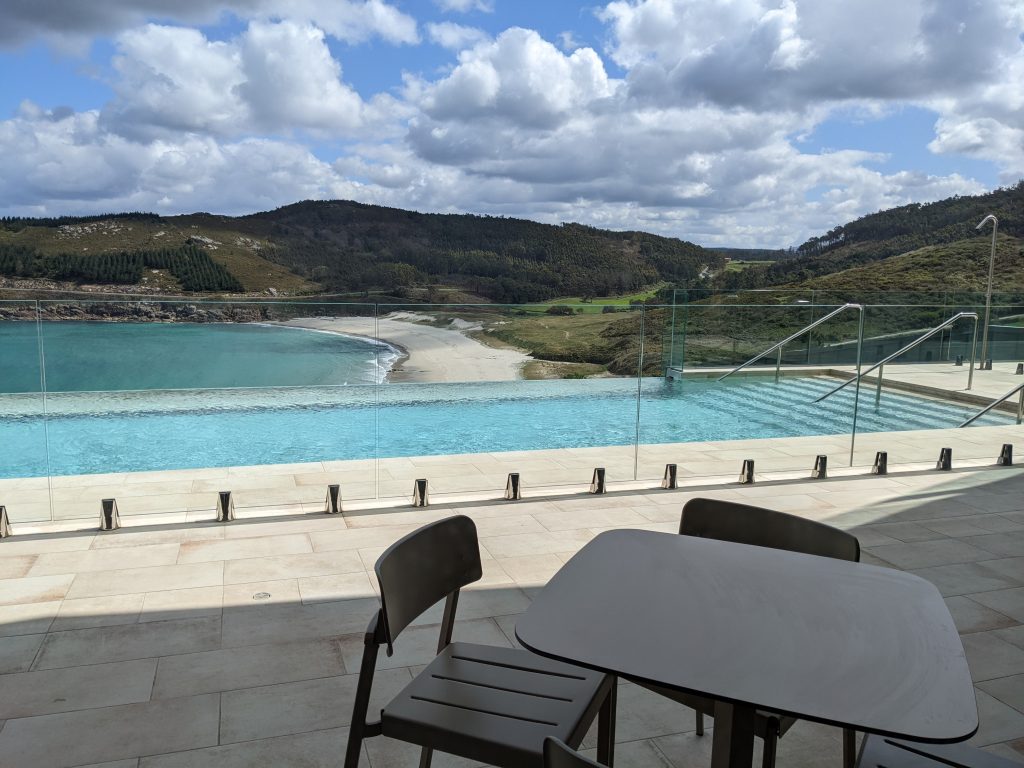
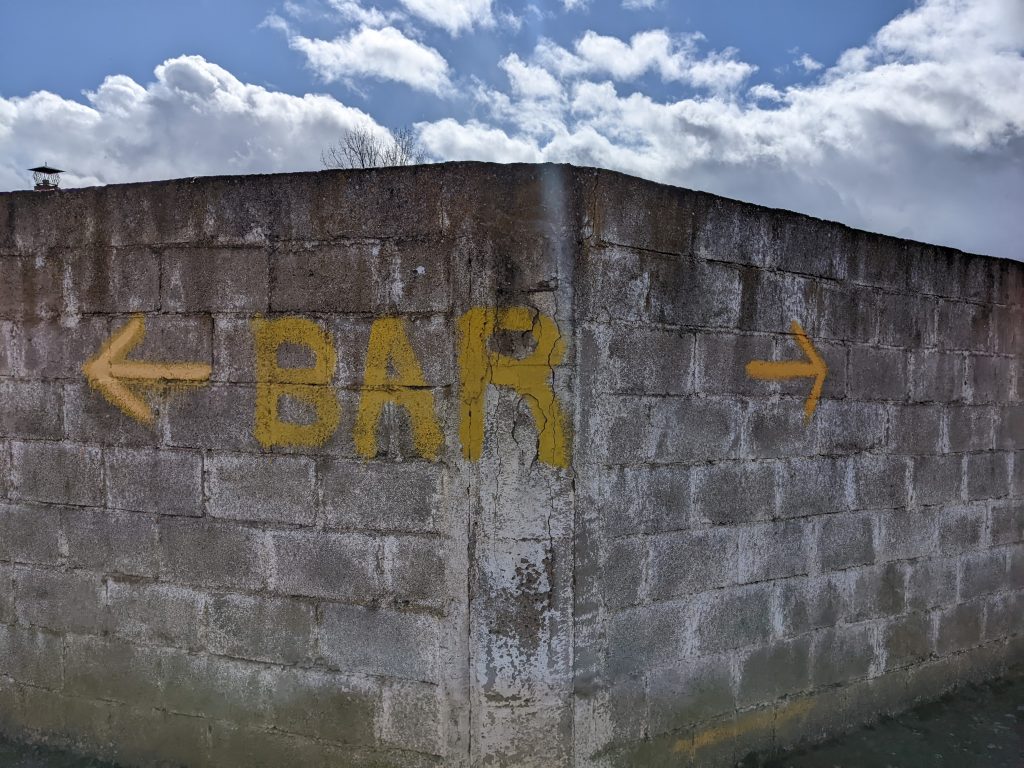
Bars in Spain are an interesting institution that we have written about in the blogs of previous trips. First, a “bar” is really a coffee house/social club/restaurant that happens to serve alcoholic beverages. We go into bars frequently as we walk the Camino. We always have cafe con leche (similar to the Italian cafe latte or French café au lait) but they have all manner of coffee drinks. They are pretty cheap, we usually pay 1.30 euro ($1.45) although this year they are often 1.50 euro and just today in a fancy Spanish government hotel (a parador) we paid a hefty 2.20.
There are always locals hanging around socializing. In small towns in Spain we often saw older men (presumably retired) who appear to hang out there all day, sometimes playing cards or dominoes. But just about everyone goes to the bars, young and old, children, men and women.

You can almost always get some food, like a bocadilla (sandwich) or tortilla (potato and onion omelette) but many bars are also full restaurants. You go in and it seems like any other bar but if you ask for comida (lunch) they usher you to an often large back room which is a restaurant.
There are, as far as we know, no bar franchises, each one is unique. Part of the fun of walking is going into a bar and discovering what it is like. Often there are interesting, themed decorations. You never know what you will run into. Many seem to be run by husband and wife teams. Even if they don’t have a restaurant they will often make fried eggs and toast for you, and it is almost always well-cooked and excellent.
There is a bar in almost all little towns and on just about every block in cities.
Yes, they do serve alcohol, mostly beer and wine but the Spanish are not all weird about alcohol like in the US. People bring their kids into bars and no one thinks anything about it. It is considered in bad taste to get drunk in Spain.
Bars serve a unique social function in Spain and I wish we had the same institution in the US. British pubs are similar but don’t have the same feel to me. We walked the Vía Francigena in Italy a few years ago and they had some bars but not nearly as many as we find in Spain.
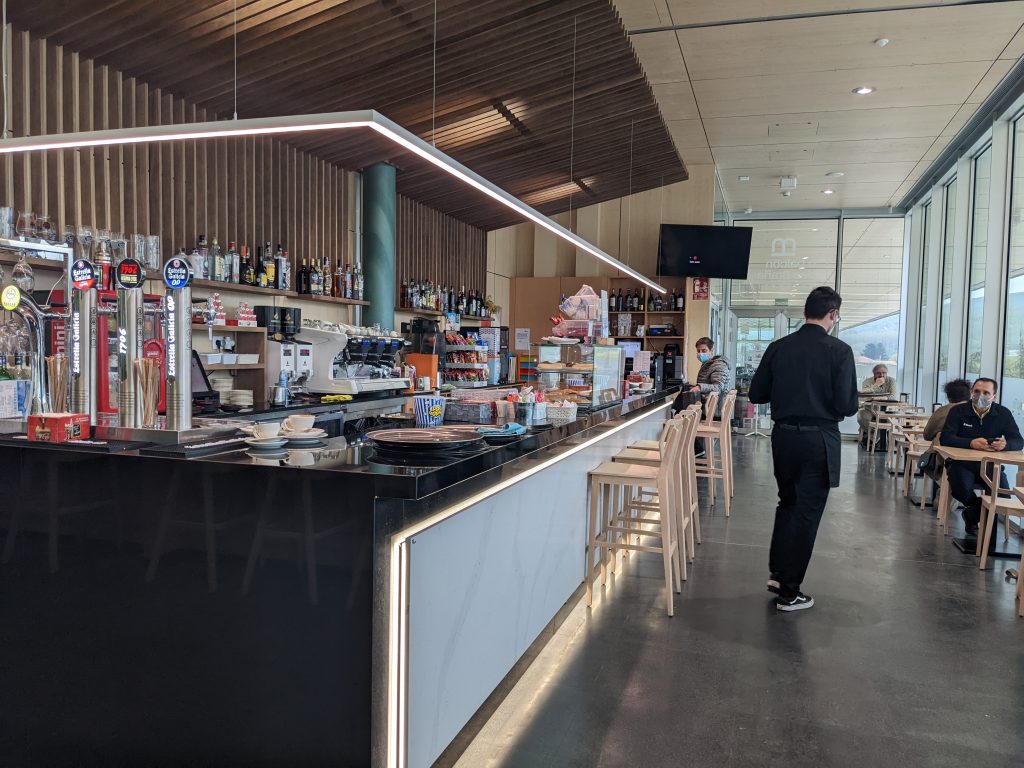
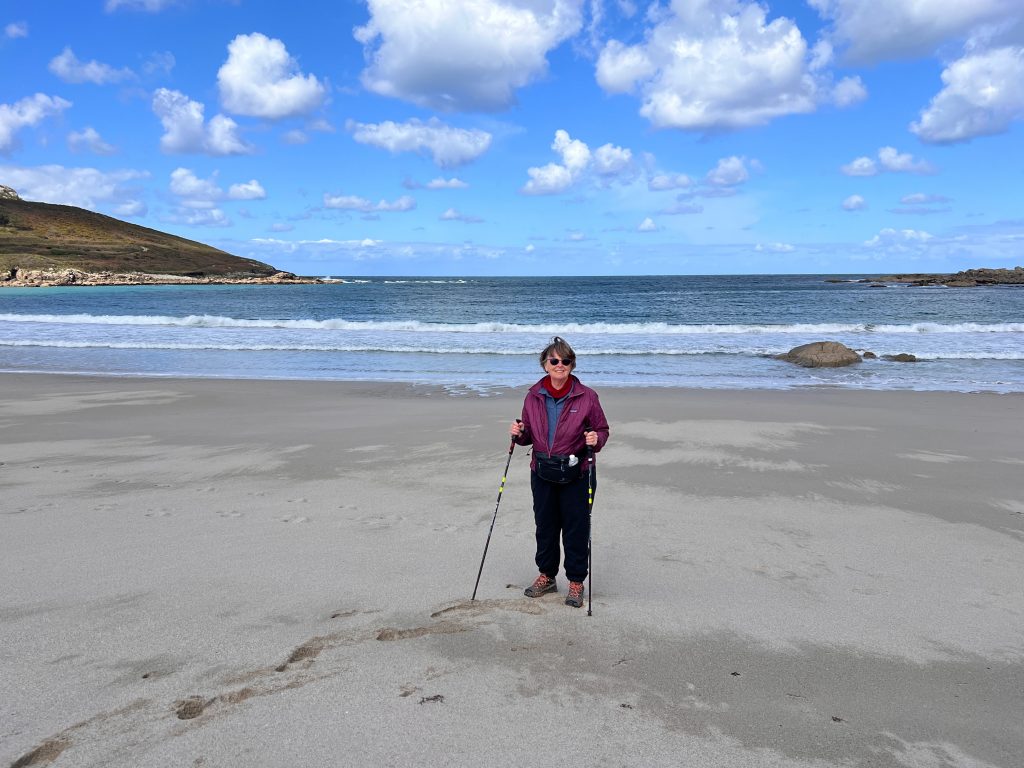
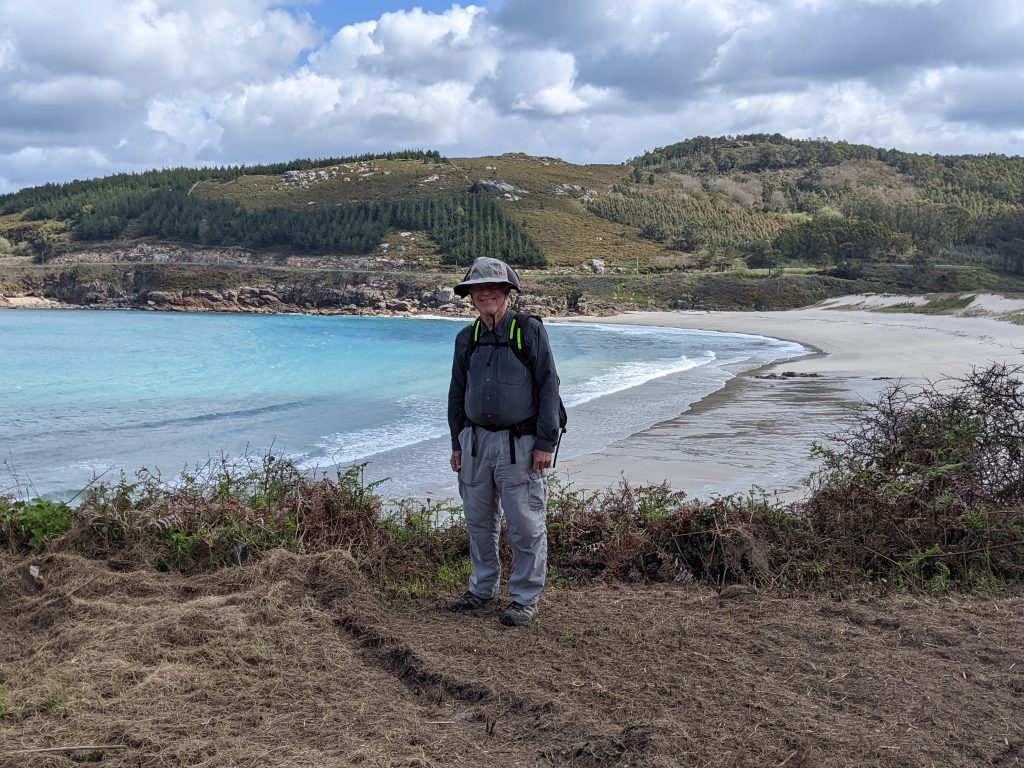
Yesterday we walked on the Camino dos Faros northeast of Muxía. Today we walked in the other direction from Muxia, to the southwest. We walked a total of about 5.5 miles but were about as tired as we were after walking 6.7 miles yesterday. There are no towns in the direction we walked today and at the point we turned around, it was a narrow, rough, rustic, thrilling, and slightly scary trail.
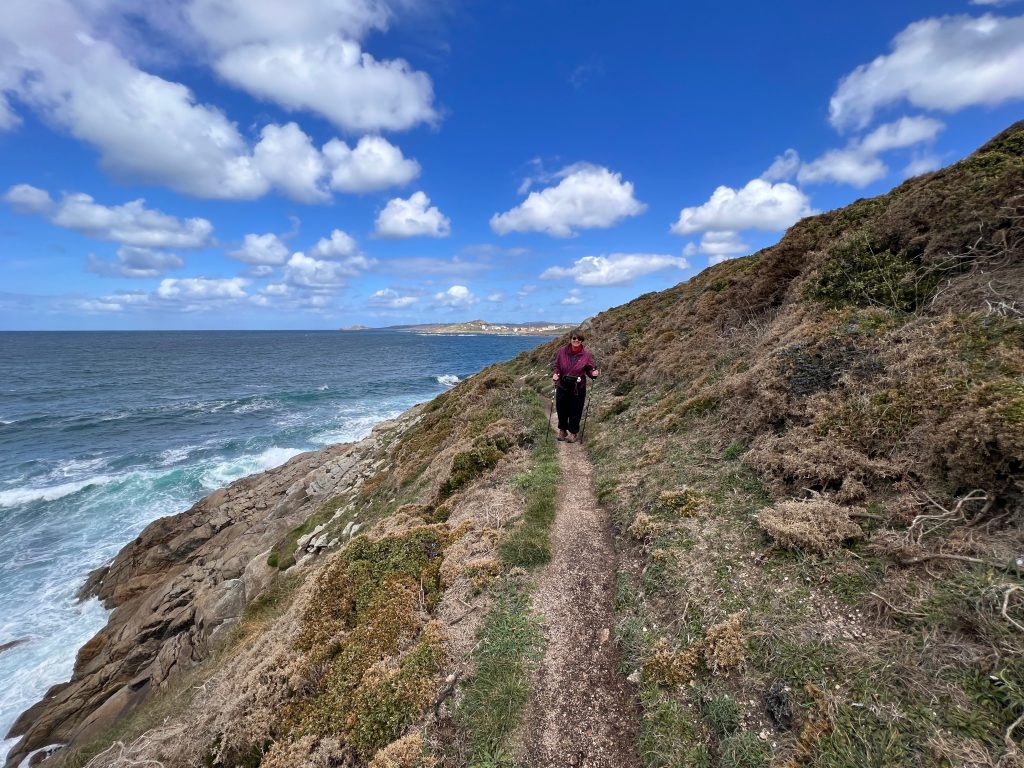
About 2 miles along, there is a parador, the only service in that direction. Can’t complain! A parador is a fancy hotel supported by the Spanish government. They are usually in historic old buildings, but this one was newly built and modern and quite fancy. We ran into a delightful Irish man walking on the long beach that the Faros path had taken us across. He told us the parador just opened for the season today (April 1!). So we decided to stop there for coffee. To get there did require going off the trail a bit and a rather steep climb, but it was worth it. They had excellent coffee. The most expensive we’ve had on this trip. But still only 2.20 euros each.
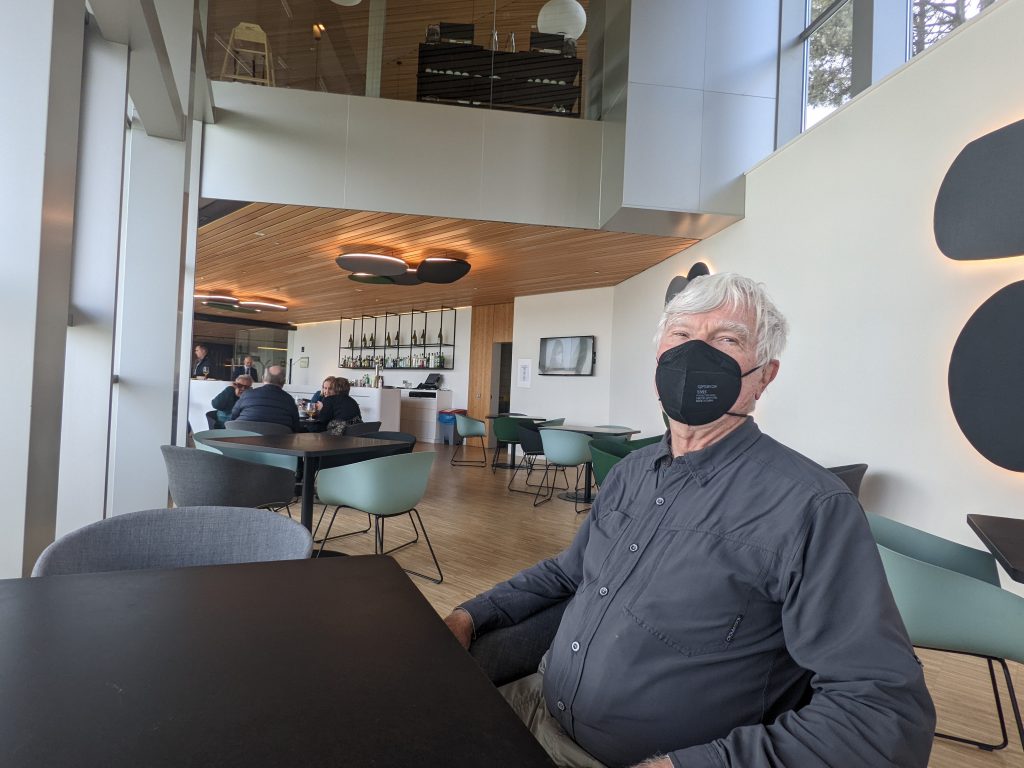
We asked about the restaurant in the parador and decided we’d walk a while and then time it to return there to eat before they stopped serving lunch. The rest of the walk was along cliffs above the ocean. Very dramatic. But as mentioned a little nerve wracking, partly because it was rather windy. We couldn’t imagine feeling safe walking there with heavy backpacks. And the path ahead looked even worse so we turned around. So, now we are having some doubts about ever doing the whole Camino dos Faros. It might be for younger, braver sorts. On our walk yesterday, there was one path the Faros wanted to take us on that I said “no” to. Very steep and narrow and possibly slippery (it had just started to rain). Luckily there was a quiet road path that got us around that spot. (Thank goodness for Google maps.) And today there was a similar straight narrow downhill path that I said no to, and again, we found another slightly out-of-the-way path but less scary. So, maybe the Faros isn’t for me. But so glad we have been able to experience it. It certainly is dramatic and beautiful.
Back to the walk today. Near the point where we decided to turn back, we still had time to make it back to the parador for lunch but I spotted some rocks we could sit on, there was a wind break, the sun was out, so I suggested we just sit there and eat the snacks we had brought instead of going back to the parador for lunch. I’m sure that saved us a lot of money and we quite enjoyed it.
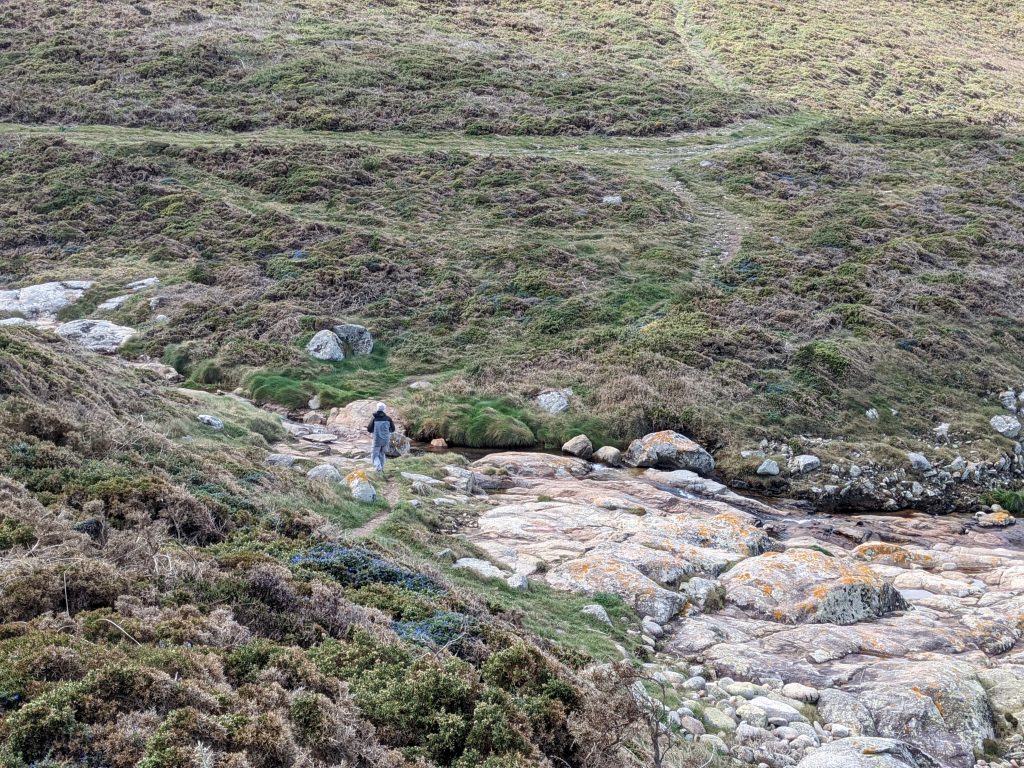
After we got back to Muxía we detoured by the grocery store and bought some frozen mussels and salad makings and went home and made lunch (by then it was more like supper). Those mussels were so good. We thawed them in the microwave and then sautéed them in a skillet with garlic and butter and olive oil. Very easy and pretty much as good as any fresh mussels we’ve ever eaten.